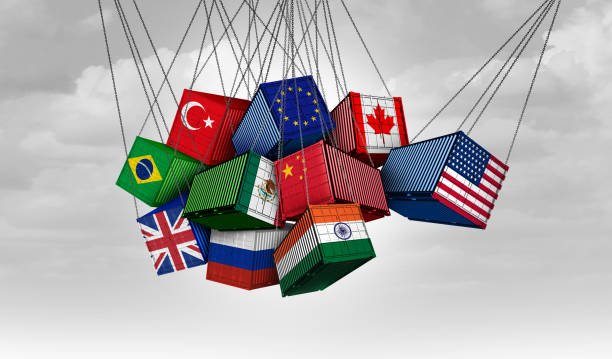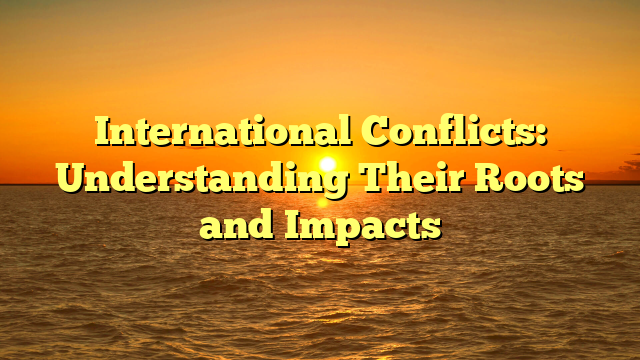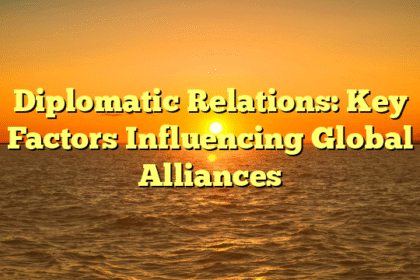International Conflicts
Worldwide conflicts have been a pervasive side of human historical past, influencing societies, economies, and cultures throughout the globe. From territorial disputes to ideological battles, the intricacies of those conflicts require a nuanced understanding to know their roots and impacts. This text goals to unpack the complexity of worldwide conflicts, exploring their causes and penalties, in the end offering actionable insights for mitigation and determination.
What Are Worldwide Conflicts?

Worldwide conflicts might be outlined as disputes between sovereign states or teams of nations, typically rooted in points like territory, sources, ideology, or nationwide pursuits. These conflicts come up when events have conflicting claims or pursuits, resulting in tensions that may escalate into violent confrontations. Understanding their nature is crucial for students, policymakers, and residents alike.
Historic Context
Traditionally, worldwide conflicts have reshaped borders, altered governance, and redefined alliances. The world wars of the twentieth century, for instance, not solely led to quick destruction but additionally sowed the seeds for ongoing international tensions. The Chilly Struggle launched ideological divisions that influenced worldwide relations for many years. By inspecting historic circumstances, we are able to higher perceive the elements contributing to up to date conflicts.
Roots of Worldwide Conflicts
1. Political Elements
Political pursuits typically drive worldwide conflicts. Disputes over governance, illustration, and nationwide identification can ignite tensions amongst nations. Authoritarian regimes might search to increase affect on the expense of democratic counterparts, resulting in confrontations.
Case Research: The Russia-Ukraine Battle
One of the vital current worldwide conflicts is the continued battle between Russia and Ukraine, rooted in political energy dynamics, territorial integrity, and nationwide sovereignty. The annexation of Crimea in 2014 by Russia exemplifies how political ambitions can manifest into violent escalations, with profound implications for international safety.
2. Financial Elements
Financial disparities and competitors for sources may gas worldwide conflicts. Nations might pursue aggressive insurance policies to safe entry to very important sources like oil, water, or minerals.
Instance: The South China Sea Disputes
The South China Sea, wealthy in pure sources, is a focus of competition amongst a number of nations, together with China, Vietnam, and the Philippines. Financial ambitions collide with nationwide sovereignty and maritime rights, making this area a hotbed for potential battle.
3. Cultural and Ethnic Tensions
Cultural and ethnic divides can intensify present conflicts or spark new ones. Historic grievances, spiritual variations, and ethnic nationalism typically play pivotal roles in worldwide disputes.
Instance: The Israel-Palestine Battle
The Israel-Palestine battle has deep roots in cultural and spiritual identities, compounded by historic grievances and territorial claims. This protracted battle showcases the complexity of worldwide disputes the place cultural identities conflict with nationwide aspirations.
4. Environmental Elements
Environmental adjustments, together with local weather change and useful resource shortage, have emerged as essential elements influencing worldwide conflicts. Because the world faces unprecedented environmental challenges, competitors over diminishing sources may escalate tensions between nations.
Case Research: Water Shortage within the Center East
Within the Center East, conflicts over water sources have been exacerbated by local weather change and inhabitants progress, resulting in disputes between nations sharing very important water provides. The Tigris and Euphrates rivers, important lifelines for nations like Iraq and Turkey, illustrate the potential for environmental points to gas worldwide tensions.
Impacts of Worldwide Conflicts
The impacts of worldwide conflicts stretch far past the quick violence and destruction. They’ve far-reaching penalties on international stability, financial improvement, and human rights.
1. Humanitarian Crises
Worldwide conflicts typically lead to humanitarian catastrophes. Wars result in lack of life, displacement of populations, and widespread struggling. Refugees fleeing battle zones create extra stresses for neighboring nations and complicate international humanitarian responses.
2. Financial Disruption
Conflicts may disrupt financial stability, impacting commerce, funding, and improvement. Useful resource allocation shifts in direction of navy spending, straining nationwide budgets and stalling financial progress. Nations embroiled in battle typically face sanctions, additional isolating them from international markets.
3. Geopolitical Shifts
Worldwide conflicts can result in vital shifts in geopolitical landscapes. Alliances could also be fashioned or redefined, and international energy dynamics can change dramatically. The rise of latest powers typically happens within the aftermath of conflicts, altering conventional spheres of affect.
4. Socio-cultural Implications
The societal impacts of worldwide conflicts can final for generations. They will engender deep-seated animosities, cultural fragmentation, and an setting of worry and mistrust. Communities typically grapple with the legacies of battle lengthy after the violence ends, affecting future generations.
Resolving Worldwide Conflicts
Whereas the roots and impacts of worldwide conflicts are advanced, there are actionable insights for mitigating and resolving these disputes.
1. Diplomacy and Dialogue
One of the efficient instruments in battle decision is sustained dialogue. Diplomatic efforts can present pathways for understanding and compromise, facilitating peaceable resolutions. Participating in dialogue at a number of ranges—bilateral talks, regional discussions, and worldwide boards—will help tackle underlying points.
2. Worldwide Cooperation
Worldwide organizations, such because the United Nations, play essential roles in battle decision and peacekeeping. Supporting multilateral frameworks can promote cooperation and collective responses to worldwide conflicts, fostering a tradition of peace.
3. Financial Growth Initiatives
Constructing financial ties between conflicting nations can scale back tensions. Financial improvement initiatives that encourage cooperation and interdependence can create mutual advantages, making the price of battle outweigh the potential beneficial properties.
4. Schooling and Consciousness
Selling schooling and cultural consciousness will help bridge divides and scale back misconceptions that gas conflicts. Encouraging dialogue amongst totally different cultural and ethnic teams fosters empathy and understanding, lowering the probability of hostility.
5. Addressing Root Causes
Lengthy-term peace requires addressing the foundation causes of conflicts. This contains political grievances, financial disparities, and social injustices. Implementing methods that empower marginalized communities and guarantee equitable useful resource distribution will help forestall conflicts from arising within the first place.
Conclusion
Worldwide conflicts are advanced phenomena formed by quite a few elements, from political ambitions to cultural tensions. Understanding their roots and impacts is essential for addressing these disputes successfully. By investing in diplomacy, fostering financial collaboration, and selling schooling, the worldwide group can work in direction of mitigating the devastating impacts of battle.
To create a extra peaceable world, we should have interaction in considerate discussions, assist battle decision initiatives, and decide to understanding the various views that form worldwide relations. Solely then can we hope to construct a future the place worldwide conflicts are much less frequent, and peace prevails.







